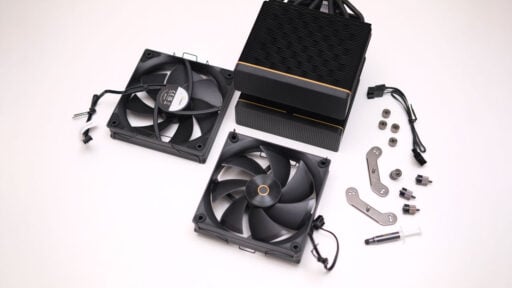Now that we’re already done with the review of the Gladius III wireless, it’s natural that we take a closer look at its wired only version.
The wired version shared everything we like about the wireless model but with a lighter 79 gram shell paired with a lower price-point.
Disclosure: ASUS sent this unit as a return sample for the sole purpose of this review. The company did not ask me to say anything particular about it but they did asked me to do a run down on its most important features.
- Product link: ROG Gladius III
- Availability: Released, worldwide
- Price: 5280 PHP, Retail
Table of Contents:
Technical Specifications
| Mouse | |
| Size | Medium-Large |
| Design | Non-ambidextrous |
| Macro | Yes |
| Profile | Yes |
| Software | Yes |
| Interface | USB 2.0 |
| Polling Rate | 125-1000Hz |
| Lighting | RGB |
| Switch | ROG Micro, Omron Optical Micro |
| Buttons | 7, 6 programmable |
| Cable Length | 2m, Paracord |
| Feet | PTFE, Teflon |
| Sensor | |
| Model | ROG in-house |
| DPI | 100-19000 DPI, 26000 DPI capable |
| Speed | 400IPS/50G |
| Dimensions | |
| Length | 123mm |
| Width | 68mm |
| Height | 44mm |
| Weight | 79g |
Packaging and Accessories
ASUS packed the mouse inside a more normal packaging compared to its wireless counterpart.
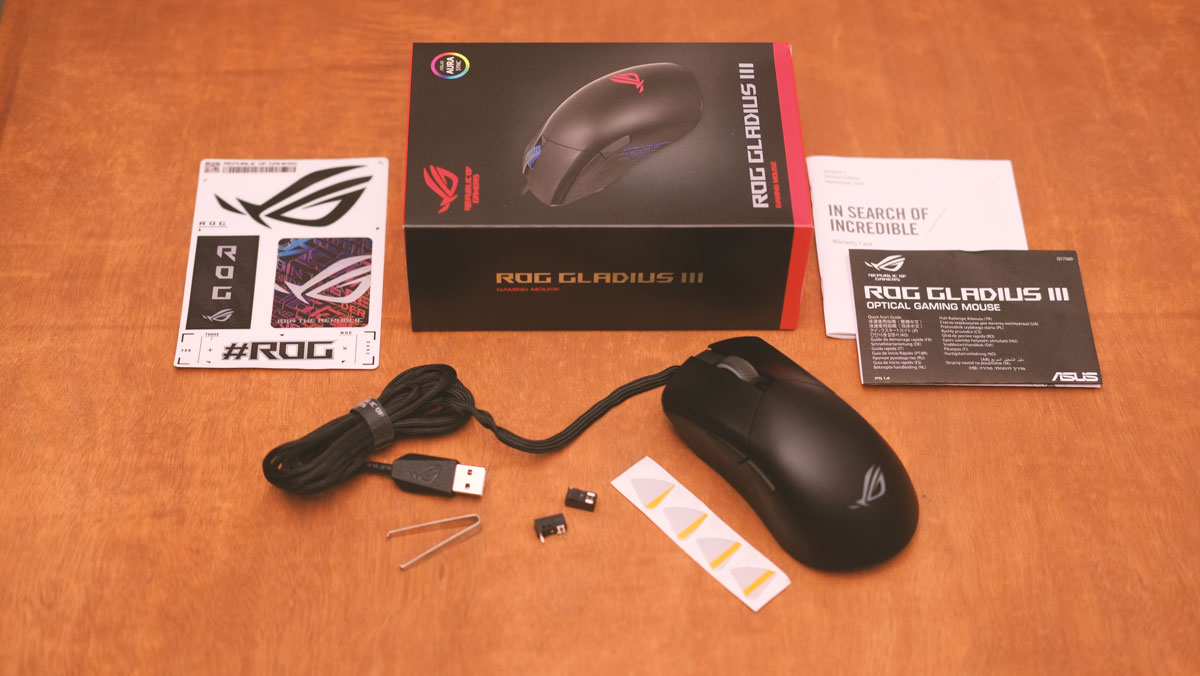
The following items should be located inside:
- ROG Gladius III Wired
- 2m USB cable
- 2x micro switches
- ROG switch tweezer
- ROG sticker
- 4x mouse feet
- Quick start guide
- Warranty booklet
Most of the listed items are necessities but we appreciated the additional skates, switches and the adapter. Also those mini decals are lit.
Design, Build and Connectivity
I said this before and I’ll say it again: The Gladius III is a more subtle looking mouse compared to the out going model – bearing the same finish, overall shape and feel but with a lighter body. This is a medium to large sized non-ambidextrous mouse, so if you’re a right-hander then this should be up your alley.
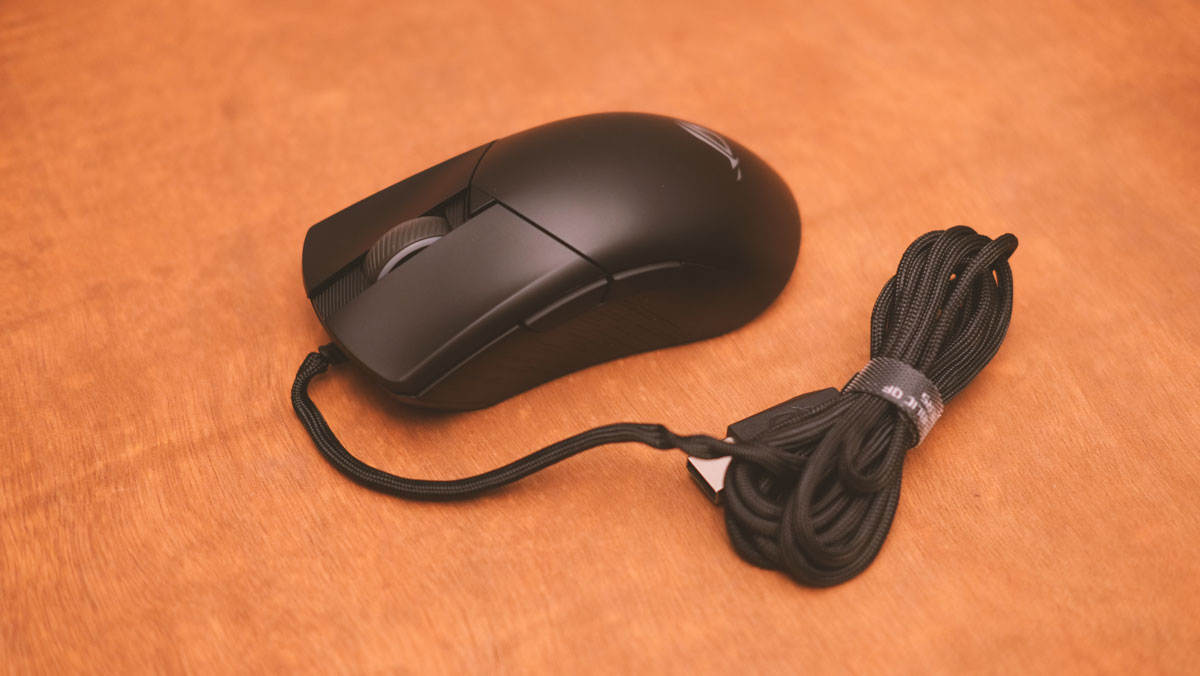 There are 7 buttons found within the mouse. 6 of them are programmable and that includes the side buttons. All of them provides a tactile feedback – even the side buttons which is not a surprise since both houses Kaihl’s switches – just like the wireless version.
There are 7 buttons found within the mouse. 6 of them are programmable and that includes the side buttons. All of them provides a tactile feedback – even the side buttons which is not a surprise since both houses Kaihl’s switches – just like the wireless version.
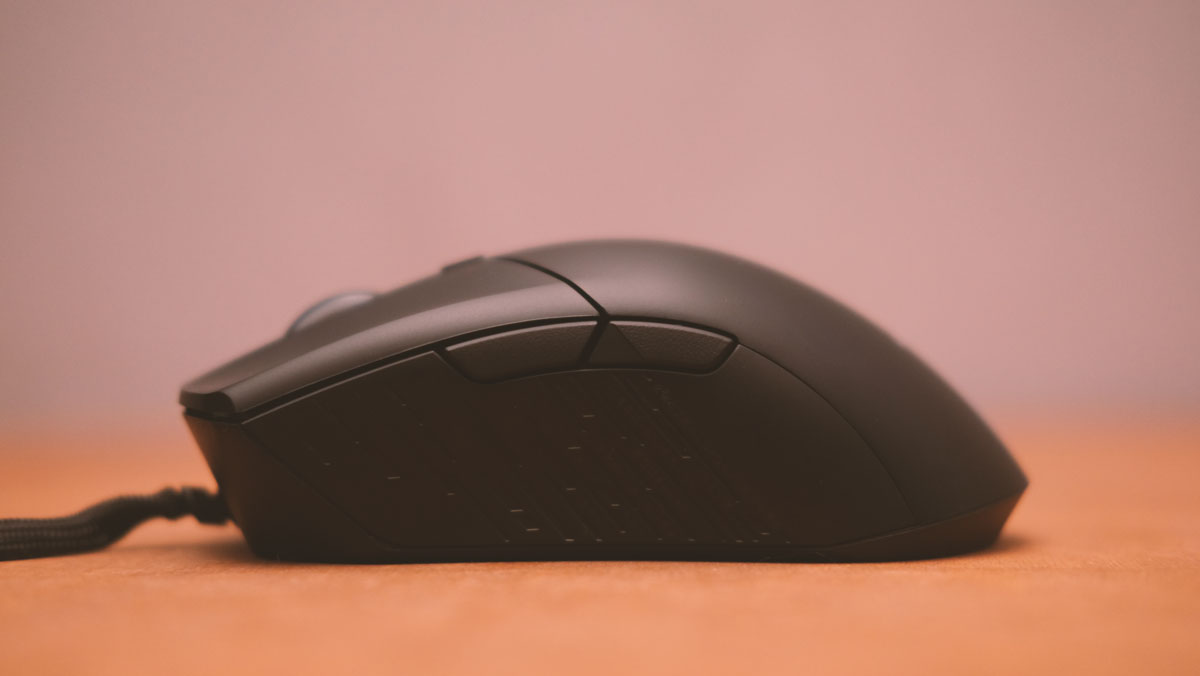
Grip area for both asides are aesthetically pleasing yet still conforms to their intended purpose. Left side is laser engraved for a more sublime RGB lighting while the right most side grip features a serrated design – that actually works just so you guys know. It’s nice that ASUS is taking notes.
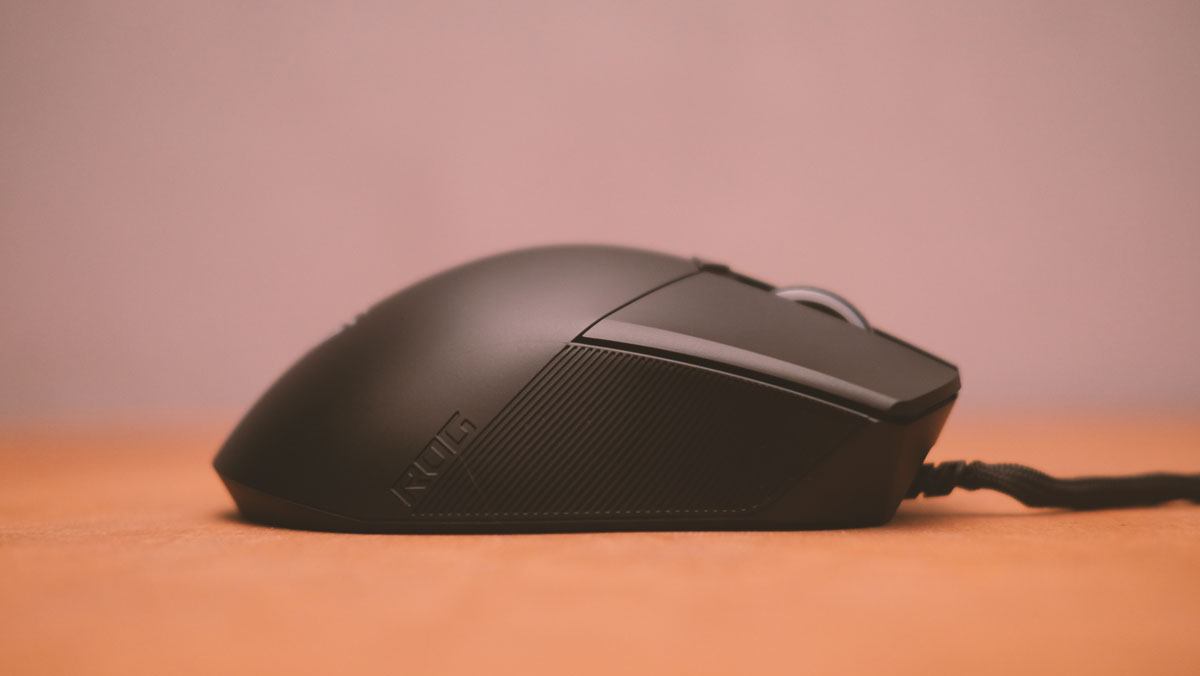
Now as for the scroll wheel, it is a detent based one like many gaming options out there. That means no infinity scroll here. Wheel is rubberized with a nice dampened tactile feedback as opposed to the rest of the switches. Like the wireless variant, this one comes with a personally excessive amount of side-to-side wobble.

Skates are four piece PTFE dubbed as the ROG Omni – cuz they are specifically designed this way to feature the best gliding performance omnidirectionally. Aside from the lack of switches here for the wireless model, the mold looks exactly the same.
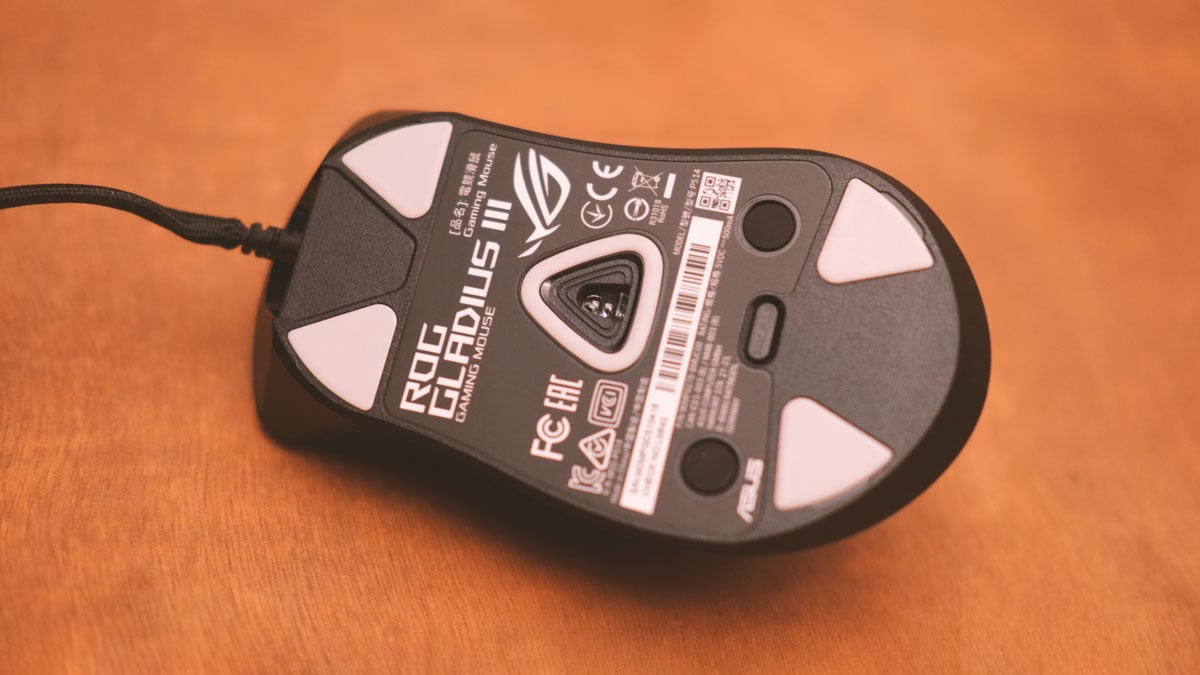
The ROG Gladius III comes with a 2 meter long paracord cable. A nice upgrade to their stiff braided cables. This is non-removable yet it glides well.
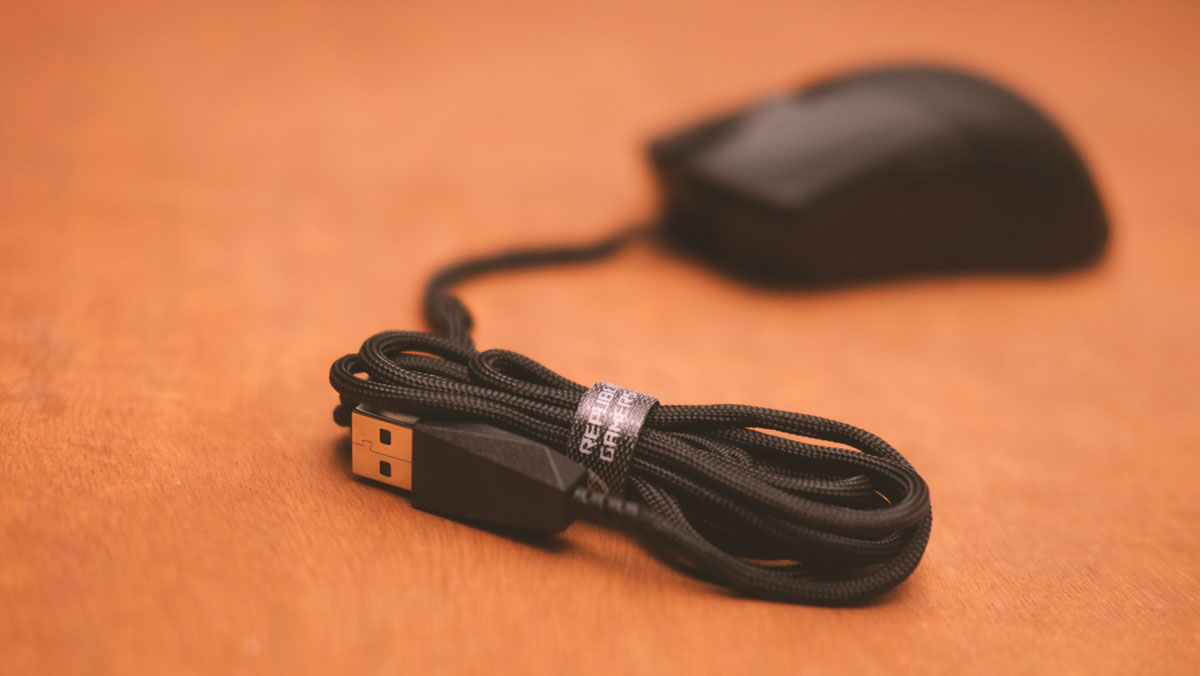
Overall, build for the most part is excellent. No creaks, no flex, but with a side-to-side main button wobble present even with the wired model.
Physical Layout, Functionality and Ergonomics
Since the wired Gladius III comes with essentially the same mold as of the wireless version, it features a length of roughly 123mm and a grip area of 68mm at its widest. The highest point of the shell is retained at 44mm. This is a high back gaming mouse with an almost dead-center summit featuring a gradual rear-end curve.
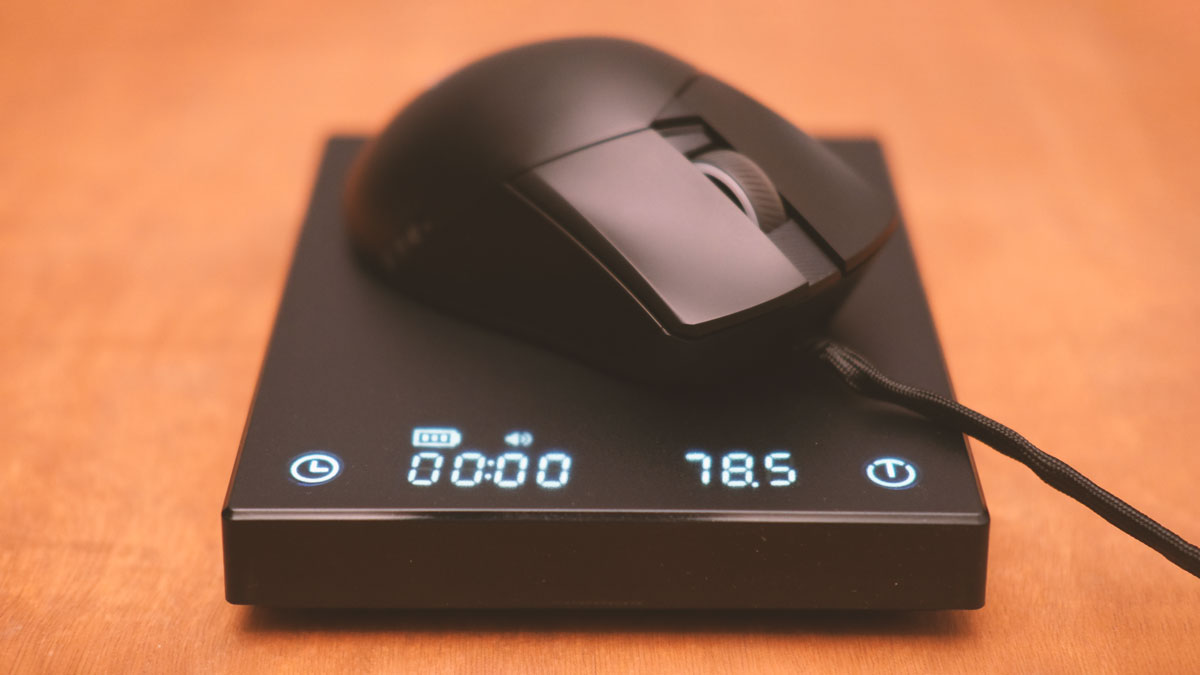
Weight is about 78.6 grams though which is almost 10 grams lower. The mouse is perfectly suitable for the three basic grip styles if you have medium to larger hands.
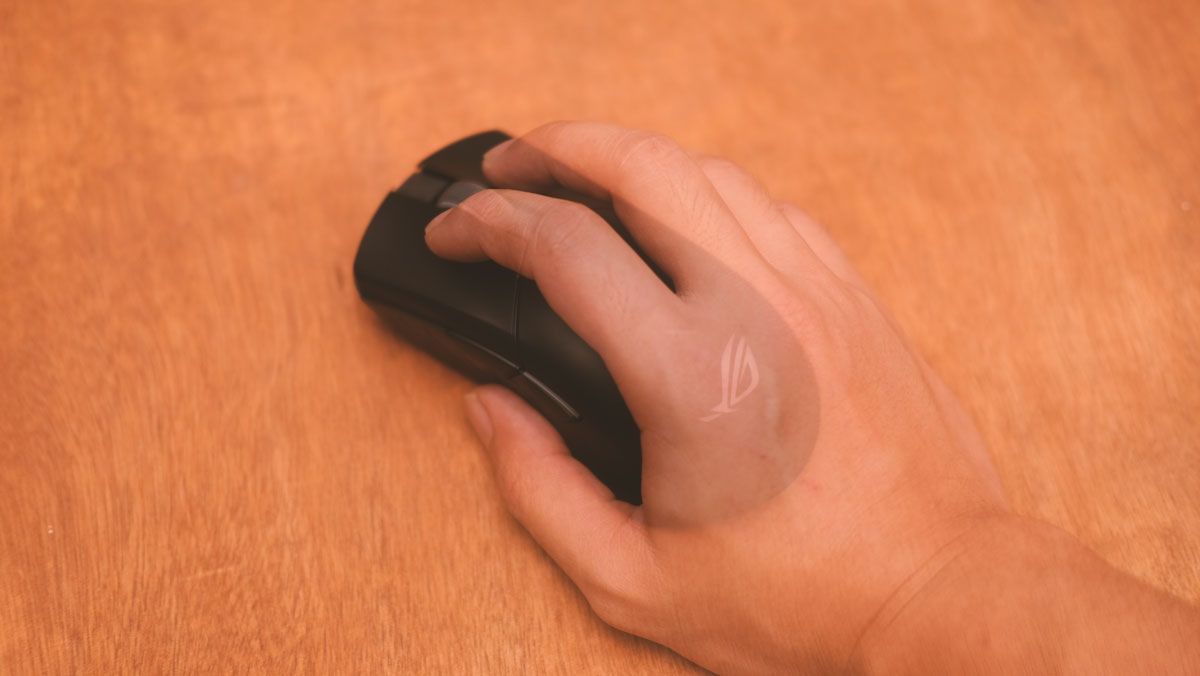
The mouse is also great for arm aiming and is planted enough for extended arm swipes. The weight is biased around the middle and without a battery inside, this lighter Gladius is just noticeably easier to swipe. No extra effort required.
Test Setup and Methodology
Testing a gaming mouse is not that difficult, but it is mostly subjective; similar to testing head gears in a sense. That said, no mouse is perfect and the verdict usually depends on personal preferences. With that in mind, to keep our testing methodology simple, replicable and free of extra variables, please note the following software and configurations used for the review.
| Test Setup | |
| Pointer Speed | 6/11, EPP Disabled |
| Sensitivity | 800 DPI |
| Polling Rate | 1000Hz |
| Software | MouseTester V1.5.3 |
| Surface | SteelSeries QcK, QcK XXL |
Polling Rate
Polling Rate of the device is evaluated with the MouseTester V1.5.3. This is to check the average update rate performance of the mouse at 1000Hz if permitted.
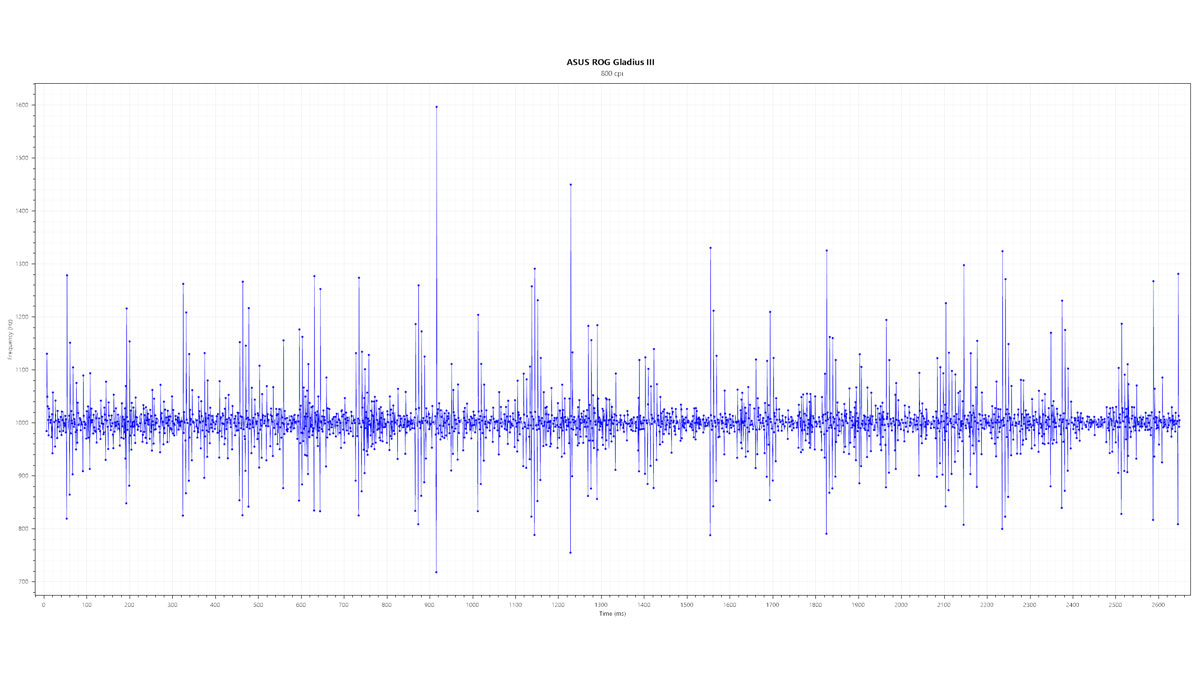
Polling performance is just average – a lot of jitter.
Tracking Speed
Tracking speed is also tested with the MouseTester software. Surface used here is the SteelSeries QcK XXL – a larger version of our favorite cloth pad.
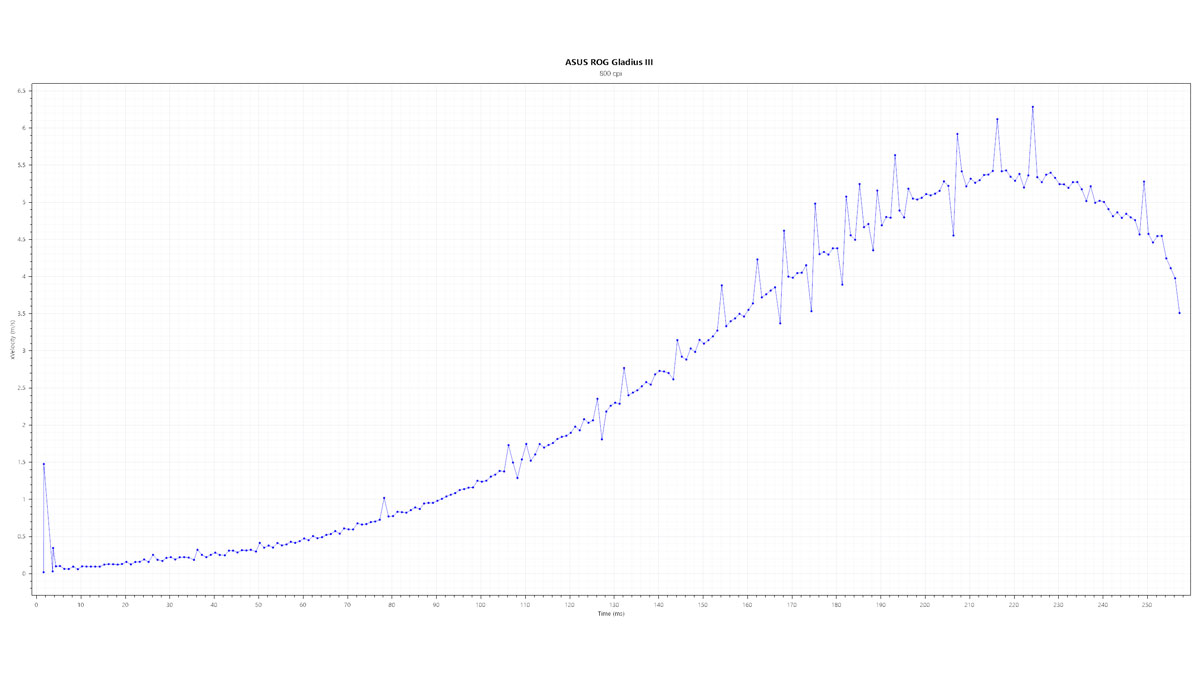
Maximum tracking speed we got is around 5m/s which is mostly due to my arm compensating for the cable. This thing could go faster but notice the not so linear velocity curve. We do not want to see peaks and droops here as this will affect tracking performance.
Tracking Performance
This test is similar to the tracking speed where we check for the sensor’s X and Y axis performance instead of speed and the X axis alone.
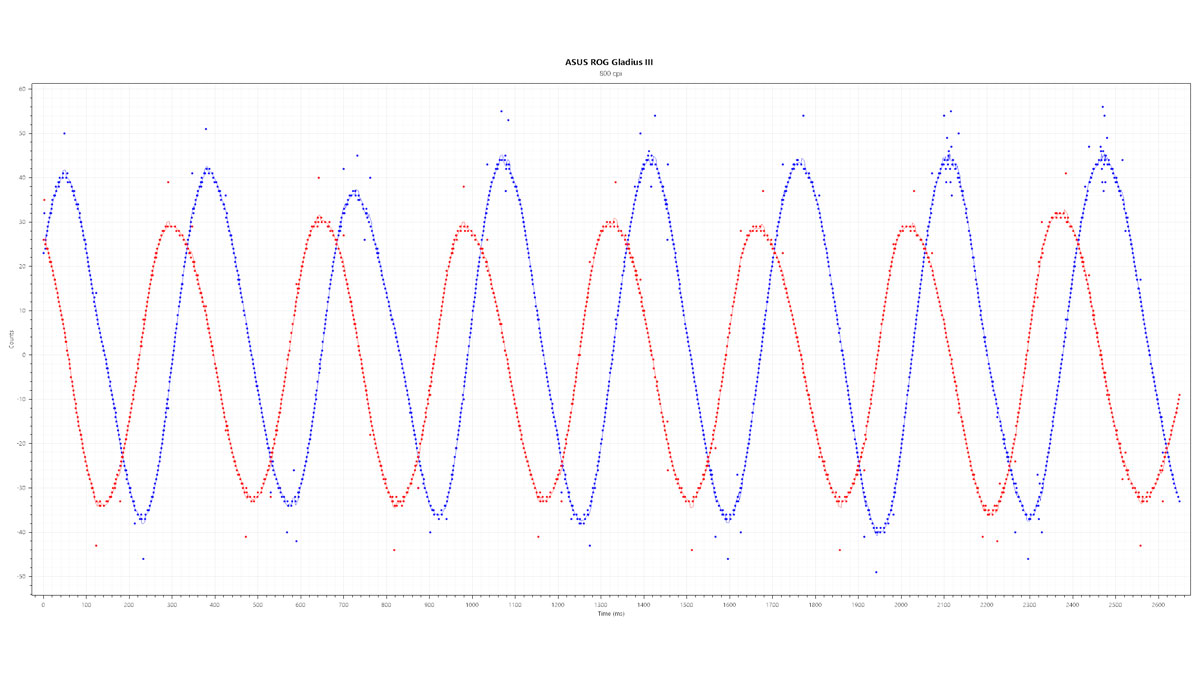
Now tracking performance at repetitive flicks shows jitters at the peak of the flick. Certainly the same with what we’ve found out on our velocity test but not that apparent at around 2m/s flicks.
Software, Lighting and Special Features
ASUS offers the Armoury Crate for the Gladius III. This is a unifying software for their gears and components and comes with firmware update capabilities. I wouldn’t go over this software as a whole since I’ve already beaten it up to date. Important features here includes macro recording, programable button capabilities, lighting effects and surface calibration.
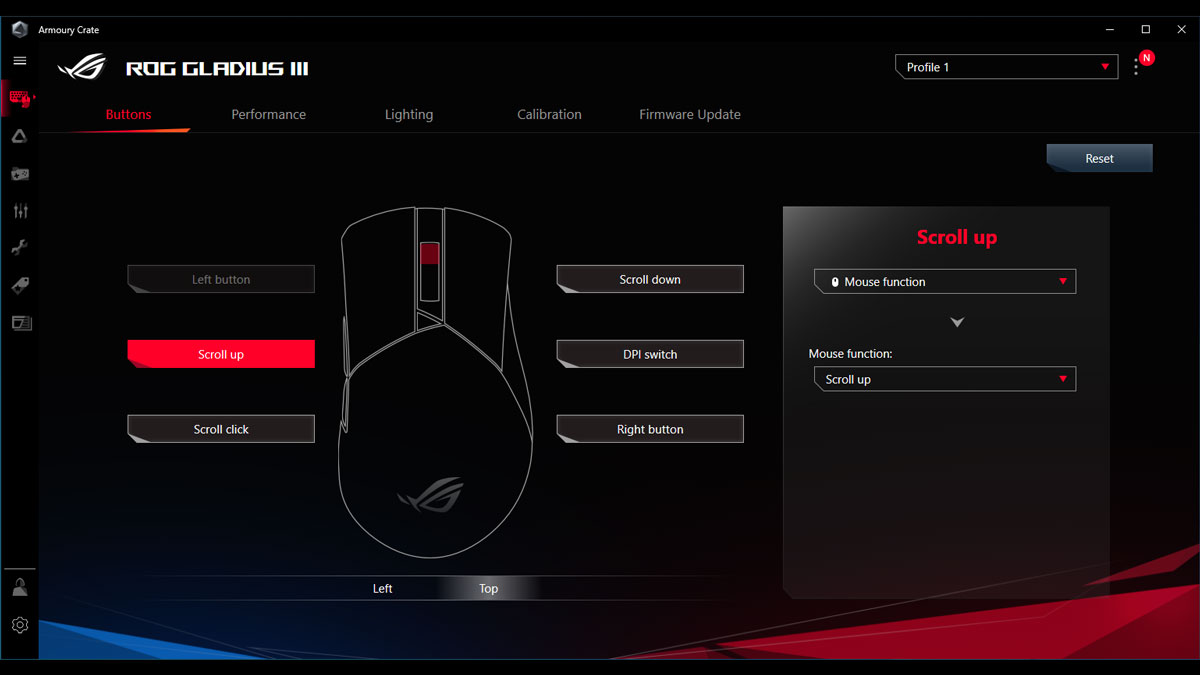
Lighting is still subtle just like the last generation Gladius but with an added glow to the laser engraved letterings found at the left side of the mouse.
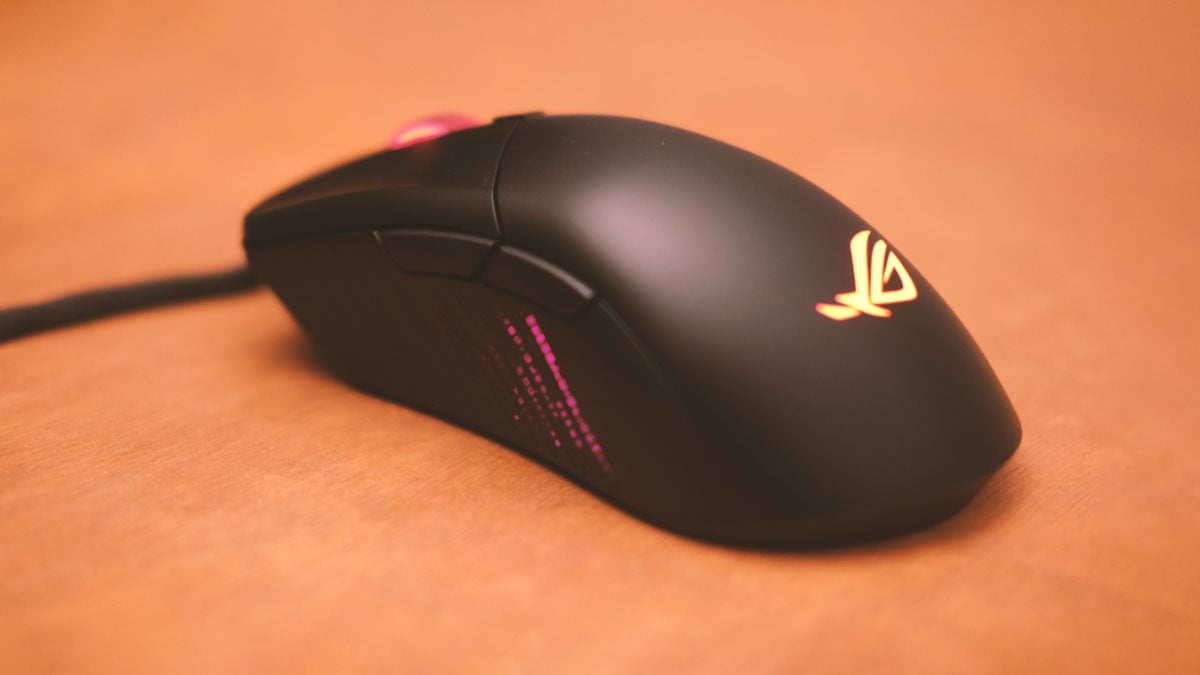
As a part of its feature, ASUS also updated the push fit socket design to accommodate their 3-prong in-house ROG switches. The new socket design could still use the 5-prong switches made by Omron so you are free to mix and match here. Serviceability has been improved too as there is another section housing the battery, the side Kaihl buttons and the scroll wheel. Yes, the battery compartment for the wireless version is still present here. It is a part of the structure holding the side buttons and the wheel.
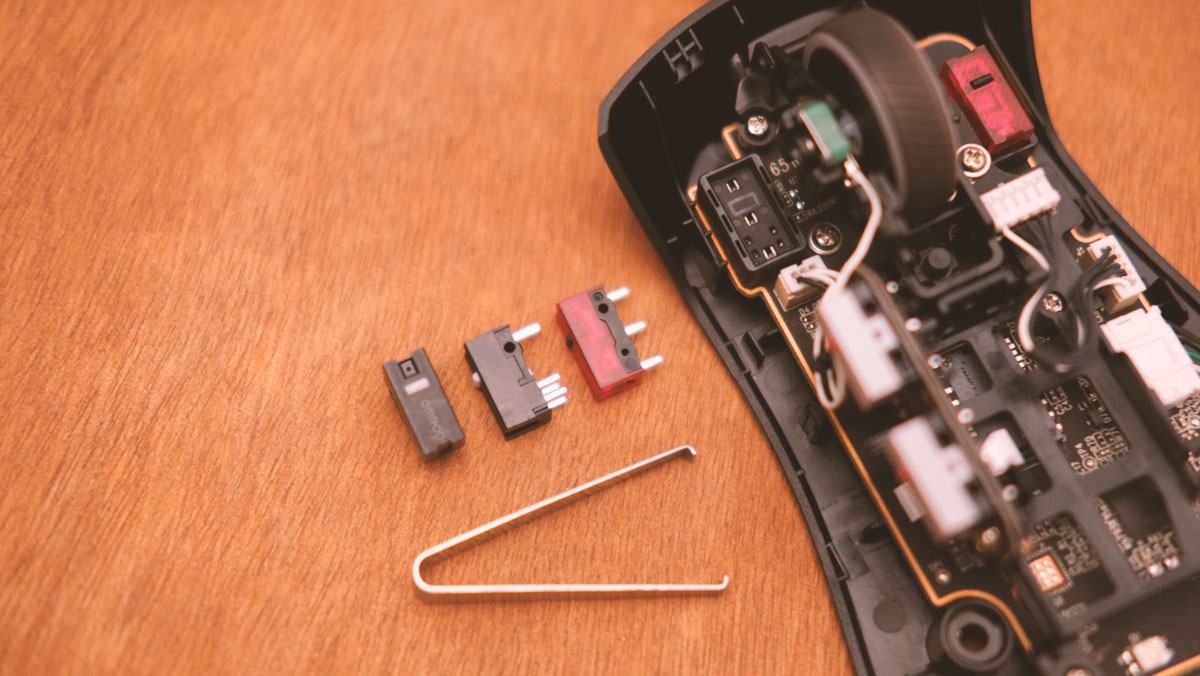
Final Thoughts
Just like the Gladius III wireless, the wired version oozes with external design perfection and feature implementation wrapped in an even more lightweight shell.
If you haven’t read the review of the wireless version, this is basically it – albeit with an almost 10 gram weight saving but with a bit lower performing sensor performance which is something I find amusing at the very least since this one is hooked up physically via a cable.
Subjectively, I do not find the wired model inferior to the wireless model. So if you want to save some penny but still want the features and the ergonomic shape of this mouse family, then I would be happy to recommend the Gladius III wired.
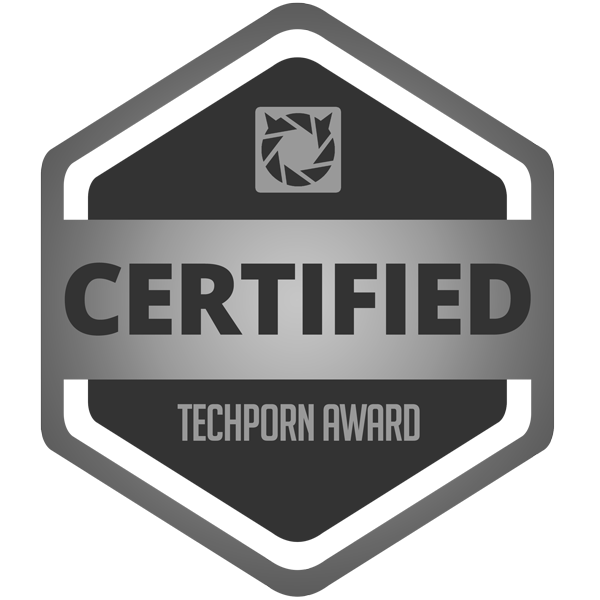
ASUS ROG Gladius III Wired
-
Performance - 8/10
8/10
-
Build Quality - 9/10
9/10
-
Connectivity - 8/10
8/10
-
Ergonomics - 9/10
9/10
-
Features - 8/10
8/10
Summary
The ASUS ROG Gladius III wired is a more affordable and a lighter variant of its more premium wireless brother. If that ticks your requirements then it’s a deal then.
Pros
- Excellent build quality
- Ergonomics – for the medium and large handed gamers
- Push-fit socket design allows for tinkering
- Excellent bundle of accessories
- Almost 10 grams lighter compared to the wireless model
- Slightly cheaper than flagship
Cons
- Sensor performance could be better
- Main button side-to-side play


